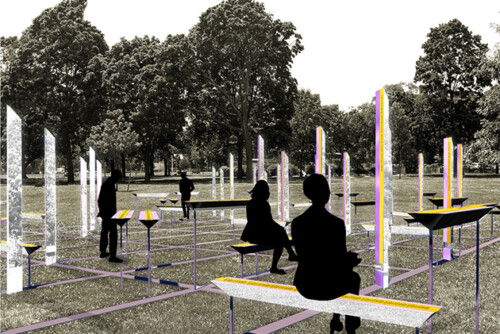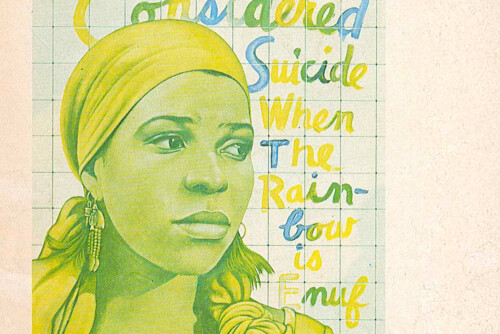The Gay Embrace of “Law and Order”
Lesbians and gays were not the only ones who embraced “law and order” frames for our antiviolence work. The themes of “crime,” “victimization,” and “get tough,” also took hold in many other groups struggling against harassment and violence. Hate crime laws were the perfect, liberal embodiment of these themes, and they spread like wildfire. The political evolution of hate crime laws has been described elsewhere.1 It is sufficient to note here that the first of the post-1960s generation of crime laws addressing bias-motivated violence was adopted in Massachusetts in 1979. The law targeted bias crimes targeting people on the basis of race, ethnicity, and religion. Two years later, the Anti-Defamation League (ADL), an organization founded to oppose anti-Semitism and other forms of bigotry2 developed a “model” template for hate crime laws that was quickly taken up and adapted by others. The ADL emphasizes that the core of its approach “is a ‘penalty-enhancement’ concept […] criminal activity motivated by hate is subject to a stiffer sentence.”3 Rooted in theory that casts bigotry and violence as the product of criminal extremism on the part of individuals and small groups, “hate crime” measures administer the proposed legal antidote—harsher penalties—within US systems of policing and punishment that produce racial, gender, sexual, and economic violence on a massive scale. This approach fails to take note of, much less address, that systemic violence.
More recently, the focus of advocacy groups in national and state civil rights and hate crime coalitions has been the addition of more protected status categories—including sexual orientation, gender, gender identity and expression, and disability—and greater expansion of federal law enforcement authority. By 2012, according to the National Gay and Lesbian Task Force (NGLTF), 30 states and the District of Columbia had some form of pro-LGBT hate crime law on the books; 13 states and DC had both sexual orientation and gender identity as protected status categories; and 17 states included only sexual orientation.4
Starting in the 1990s, federal hate crime laws proliferated, focusing on mandated data collection and reporting, “hate crime sentencing enhancements” tucked into the much broader Violent Crime Control and Law Enforcement Act of 1994, and more. LGBTQ groups lobbied to be included in each one. In 2010, the dominant LGBTQ advocacy, policy, and services sector successfully lobbied for passage of a new federal law, the Matthew Shepard and James W. Bryd, Jr. Hate Crimes Prevention Act that extends the status categories included in federal law, provides funding to support state and local hate crime investigations, and expands federal authority for investigating and prosecuting hate crimes. Today, many LGBTQ people take it on faith that hate crime laws and other “get tough” crime measures will help protect all queer folks, create a more just society, and are, in fact, an essential first step toward the creation of safety. Hate crime laws, supporters tell us, send “the message that crimes motivated by prejudice are unacceptable, ”5 and that “certain crimes that strike at this country’s core values, such as the freedom to live free of persecution, will be punished and deterred by both enhanced penalties and federal involvement in the investigation and the prosecution of the crime.”6 With the passage of the 2009 federal hate crime bill, one leader declared, “[O]ur country has—once and for all—sent a clear and unequivocal message that it rejects and condemns all forms of hate violence, including crimes motivated by hatred of lesbian, gay, bisexual and transgender people.”7
But queer organizations working in and with people of color, poor, and low-income constituencies, including the Sylvia Rivera Law Project, Audre Lorde Project, Queers for Economic Justice, FIERCE, and others have publicly stepped away from the hate crime law framework.8 Their experience does not lead them to agree that such a “clear and unequivocal” message has either been sent or received—or that “get tough” law is an effective vehicle for transmitting such a message.
The False Promises of “Get Tough”
The contemporary (and widening) “law and order” divide within the larger LGBTQ movement brings to the fore all of the messiness, tension, and complication inherent in dealing with law enforcement, violence, and safety issues through an intersectional lens. Homophobia, transphobia and heterosexism are utilized not only as an independent basis of punishment, but also to bolster race- and gender-based law enforcement and help drive larger political and economic agendas.9
Amnesty International USA’s groundbreaking report, Stonewalled: Police Abuse and Misconduct Against Lesbian, Gay, Bisexual and Transgender People in the U.S., released in 2005, documents a devastating, systemic pattern of anti-queer violence and harassment in such areas as searches and detention, profiling and selective law enforcement, and abuse that may be sexual, physical, or verbal. This is so even though an overwhelming majority of the police departments responding to a related Amnesty survey said that they provide training on LGBTQ issues. Even more troubling: Stonewalled findings confirm that race “continues to be a motivating factor in presumptions of queer criminality, and that racism compounds the homophobic and transphobic treatment of LGBT people of color by police.”10
Moreover, as Joey L. Mogul, Andrea J. Ritchie, and I argue in Queer (In)Justice: The Criminalization of LGBT People in the United States, both anecdotal evidence and the Amnesty research suggest that police profile queer people of color—particularly those who are young—as potential perpetrators of hate crimes in predominantly white, gay, urban enclaves. Criminalizing archetypes that frame people of color as dangerous and “more homophobic” than whites increase the likelihood that police will aggressively target, harass, and stop queers of color in gentrifying neighborhoods questioning them about their “right” to be there and to use public streets.11
Thus, the mere presence of people who don’t fit into a “desirable” demographic category is, as American Studies scholar Christina Hanhardt points out, regarded as the presence of violence itself. This translates into the often-abusive policing of policing of youth, unlicensed street vendors, sex workers, and poor and homeless people, many of whom are queer and disproportionately, people of color. In this way, too, Hanhardt notes, the policing (and privatization) of public space at the behest of more affluent property owners is framed as an “antiviolence” response.12
Within jails and prisons, queers are subjected to multiple, systemic forms of heterosexist mistreatment, harassment, and abuse. The degrading, cruel, and inhuman treatment of incarcerated trans and gender nonconforming people is so widespread that the Sylvia Rivera Law Project “recognizes the urgent need for a fundamental shift away from our culture’s over-reliance on imprisonment and policing as solutions to poverty, violence, drug use, and other social and economic problems.”13
Any justice movement worth its salt must develop antiviolence strategies that name, resist, and seek to dismantle not only processes of queer criminalization (that are raced, classed, and gendered), but also the state violence that accompanies them.
- See James B. Jacobs and Kimberly Potter, Hate Crimes: Criminal Law & Identity Politics (New York: Oxford U Press, 1998); and Brian Levin, “From Slavery to Hate Crime Laws: The Emergence of Race and Status-based Protection in American Criminal Law” Journal of Social Issues 58.2 (2002): 227-245. [↩]
- Ironically, the ADL itself has been criticized for stoking bigotry and injustice. For example, in 2010, the ADL fueled anti-Muslim sentiment in the United States by opposing a proposed Islamic center and mosque two blocks north of 9/11/s “ground zero” in New York City. See, for example: Michael Barbaro, “Debate heats Up About Mosque Near Ground Zero,” New York Times 30 July 2010. The ADL also has consistently worked to suppress voices dissenting from the Israeli government’s repressive polices relating to and human rights abuses against Palestinians. See, for example, Eric Alterman, “The Defamation League,” The Nation 16 Feb. 2009. [↩]
- Quoted from “ADL Model Legislation” on the hate crimes pages of the website of the Anti-Defamation League, accessed on June 27, 2008. [↩]
- National Gay and Lesbian Task Force, Hate Crime Laws Map (New York: National Gay and Lesbian Task Force, 2009). (Accessed on September 14, 2010). [↩]
- See, for example Winnie Stachelberg and Josh Rosenthal, “Taking on Hate Crimes,” Center for American Progress 3 Dec. 2007. [↩]
- See the Hate Crimes Main Page in the Issues section of the Web site of the National Gay and Lesbian Task Force. (Accessed August 15, 2009). [↩]
- National Gay and Lesbian Task Force, Signing of hate crimes measure is historic (New York: National Gay and Lesbian Task Force, 2009). (Accessed on October 15, 2010). [↩]
- See Sylvia Rivera Law Project, FIERCE, Queers for Economic Justice, Peter Cicchino Youth Project, and Audre Lorde Project, letter to the GENDA coalition and allies, 6 Apr. 2009. (Accessed on October 15, 2009). [↩]
- Mogul, Ritchie, and Whitlock. [↩]
- Amnesty International, Stonewalled: Police Abuse and Misconduct against Lesbian, Gay, Bisexual and Transgender People in the U.S. (New York: Amnesty International USA, 2005) 114. [↩]
- Mogul, Ritchie, and Whitlock 128-29. [↩]
- Christina B. Hanhardt, “Butterflies, Whistles, and Fists: Gay Safe Streets Patrols and the New Ghetto, 1976 – 1981, Radical History Review, Issue 100 (Winter 2008), 67–70. [↩]
- Sylvia Rivera Law Project, “It’s War in Here:” A Report on the Treatment of Transgender and Intersex People in New York State Men’s Prisons (New York: Sylvia Rivera Law Project, 2007) 34. See also Eric A. Stanley and Nat Smith (eds.), Captive Genders: Trans Embodiment and the Prison Industrial Complex (Oakland, CA: AK Press, 2011). For a general overview of queer experiences in prisons, see Mogul, Ritchie, and Whitlock 92-117. [↩]




